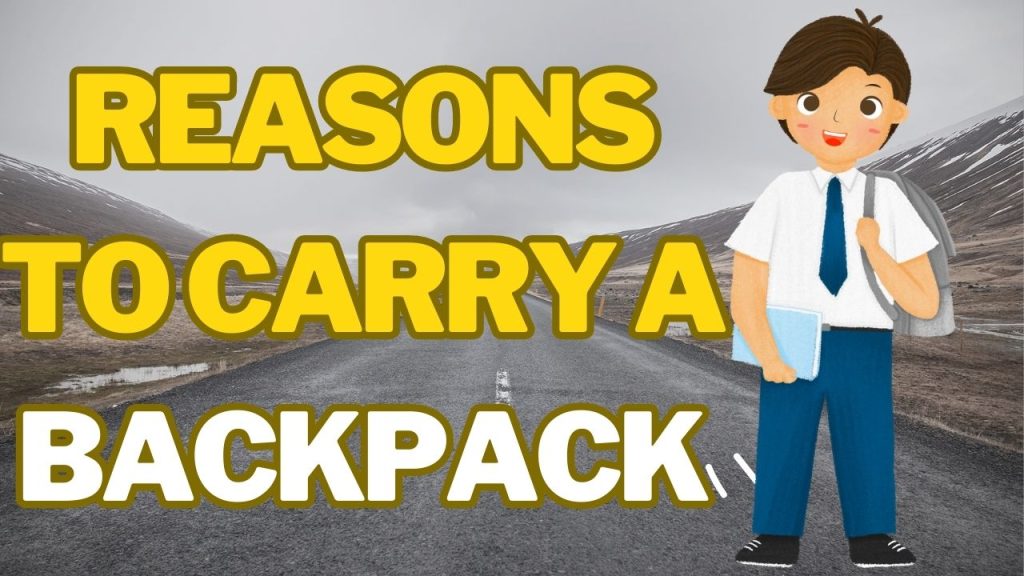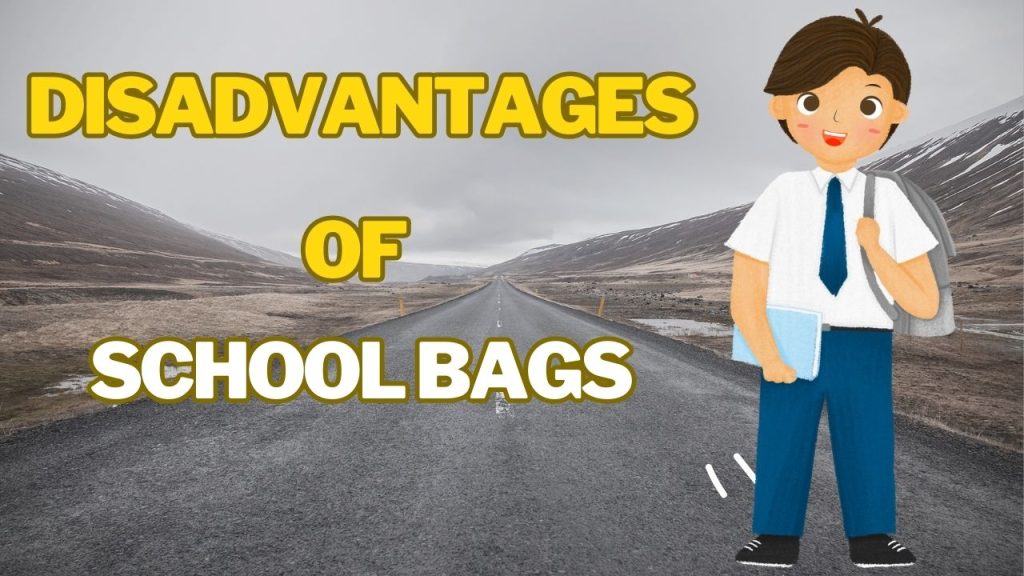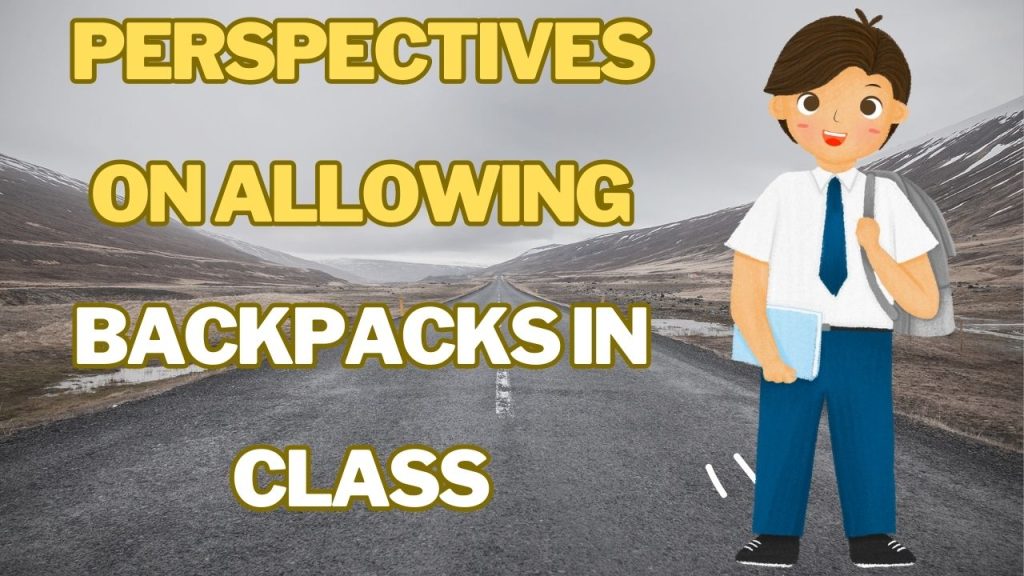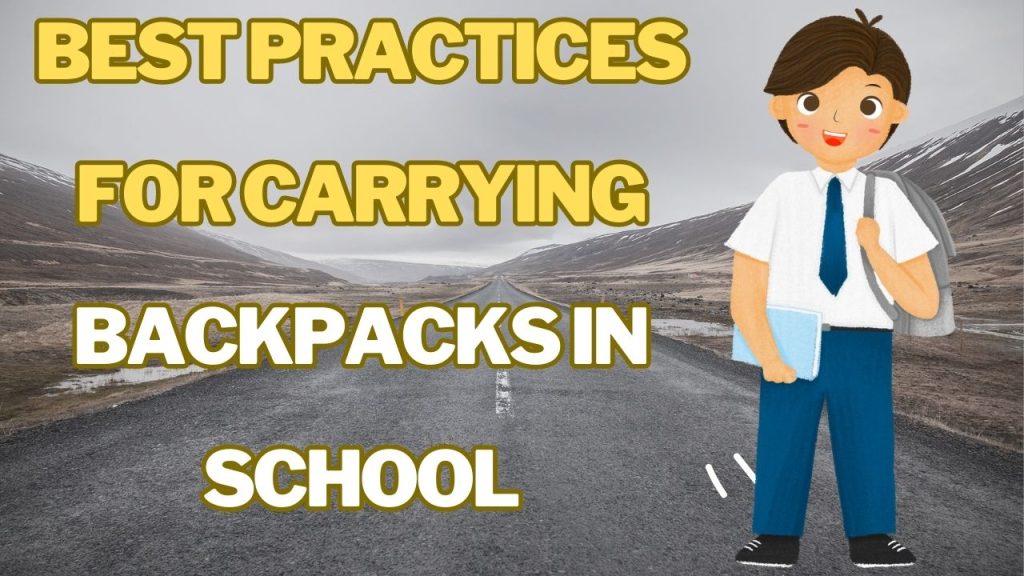Should Schools Allow Backpacks in Class?
In some schools, the backpack is allowed in the USA. In classrooms worldwide, backpacks are a common sight—and for a good reason. Students may easily transport their textbooks, laptops, and other necessities with the help of these bags.
However, some schools have forbidden using backpacks in the classroom due to safety issues and unruly students. In this post, we’ll Should Schools Allow Backpacks in Class.
Do you bring your backpack to class in high school?
Reasons to carry a backpack
A backpack can be a convenient and practical way to transport personal belongings. Here are some reasons why carrying a backpack can be beneficial:

Hands-free:
A backpack frees your hands to do other tasks, like carrying additional items or using your phone.
Even weight distribution:
When you wear a backpack, the weight of your belongings is evenly distributed across your back, which can prevent muscle strain and injury.
READ MORE: Are Military Backpacks Good for Hiking?
Large capacity:
Backpacks come in various sizes and shapes, allowing you to carry a large volume of items with ease, such as books, laptops, and other daily essentials.
Durability:
Backpacks are typically made from sturdy materials, making them long-lasting and resistant to wear and tear.
Comfort:
Many backpacks come with padded straps and back panels, making them more comfortable to wear for extended periods.
Versatility:
Backpacks can be used for various activities, such as hiking, traveling, and commuting.
Style:
Backpacks come in a wide range of designs, from classic to trendy, allowing you to choose one that suits your style.
Carrying a backpack can offer numerous benefits, from convenience and practicality to comfort and style. So whether you are a student, traveler, or commuter, a backpack can be a valuable and reliable accessory to help you easily carry your belongings.
READ MORE: How to Shorten Backpack Straps with Cutting?
Should backpacks be allowed in classrooms
Backpacks are a ubiquitous sight in schools across the world, but their usage can have a significant impact on student health. Here are should backpacks be allowed in classrooms:

- Weight: According to a study by the American Academy of Pediatrics, backpacks can weigh up to 20% of a student’s body weight, which can cause strain on the muscles and spine.
- Injuries: The same study found that backpack-related injuries account for more than 7,000 emergency room visits annually in the United States. These injuries include sprains, strains, and fractures.
- Long-term effects: Carrying heavy backpacks for extended periods can lead to long-term health problems such as chronic pain, poor posture, and scoliosis.
- Gender differences: Studies have shown that girls are more likely than boys to experience back pain from carrying backpacks, possibly due to differences in body composition and the types of backpacks they choose.
- Recommended weight: The American Occupational Therapy Association recommends that backpacks weigh no more than 10-15% of a student’s body weight to avoid injury.
While backpacks are convenient for students to carry their school supplies, their usage can have significant health implications if not used properly. Students, parents, and schools need to reduce the weight of backpacks and promote proper usage to prevent injuries and long-term health problems.
READ MORE: How to fix torn backpack straps?
Disadvantages of school bags
While school bags are a standard accessory for students, they can also have disadvantages. Here are some of the disadvantages of school bags:

- Heavyweight: One of the most significant disadvantages of school bags is their weight. Students often carry many books and supplies in their bags, resulting in a heavy load that can strain their backs and shoulders. This can lead to pain, discomfort, and even long-term health problems.
- Back problems: Carrying heavy school bags can also lead to back problems, particularly in the lower back. The bag’s weight can pull the spine out of alignment, leading to strain and discomfort.
- Limited space: School bags can also be limited in space, meaning that students may have to leave certain items behind or carry multiple bags.
- Safety concerns: Some schools may have safety concerns around using school bags. For example, bags may be banned from certain school areas or must be kept in lockers during class time.
- Expense: High-quality school bags can be expensive, which can be a burden for families on a tight budget.
Overall, while school bags are a practical way for students to carry their supplies, they can also have disadvantages. To minimize the adverse effects of school bags, students must choose bags with padded straps and back panels, use both straps when carrying their bags, and avoid carrying unnecessary items.
Perspectives on Allowing Backpacks in Class
The debate over whether backpacks should be allowed in class is contentious, with different perspectives on both sides. Here are some of the most typical viewpoints:

For Allowing Backpacks in Class
- Backpacks are convenient for students to carry their belongings and stay organized.
- Banning backpacks in class can be unfair to students with long commutes or extracurricular activities after school.
- Students should be trusted to use their backpacks responsibly and not disrupt the classroom.
Against Allowing Backpacks in Class
- Backpacks can conceal dangerous items, making it more challenging to maintain a safe learning environment.
- Allowing backpacks in class can be a distraction and interrupt the lesson flow.
- Schools are responsible for protecting students from potential health risks associated with carrying heavy backpacks.
Best Practices for Carrying Backpacks in School
If backpacks are allowed in class, students need to use them responsibly. Here are some best practices for carrying backpacks in school:

- Keep backpacks organized and clean to reduce the risk of losing items
- Avoid overloading backpacks with too much weight to prevent back and shoulder pain.
- Use both straps when carrying a backpack to distribute the weight evenly.
- Don’t carry backpacks on one shoulder, which can cause uneven weight distribution and lead to pain and discomfort.
Conclusion
in the above portion of my blog, have written a complete guide on ” Should Schools Allow Backpacks in Class “The decision of whether to allow backpacks in class is complex, with various factors to consider. While backpacks provide convenience and organization for students, they can also pose safety and health risks. Ultimately, it’s up to individual schools to determine what works best for their students and staff.
Share Us